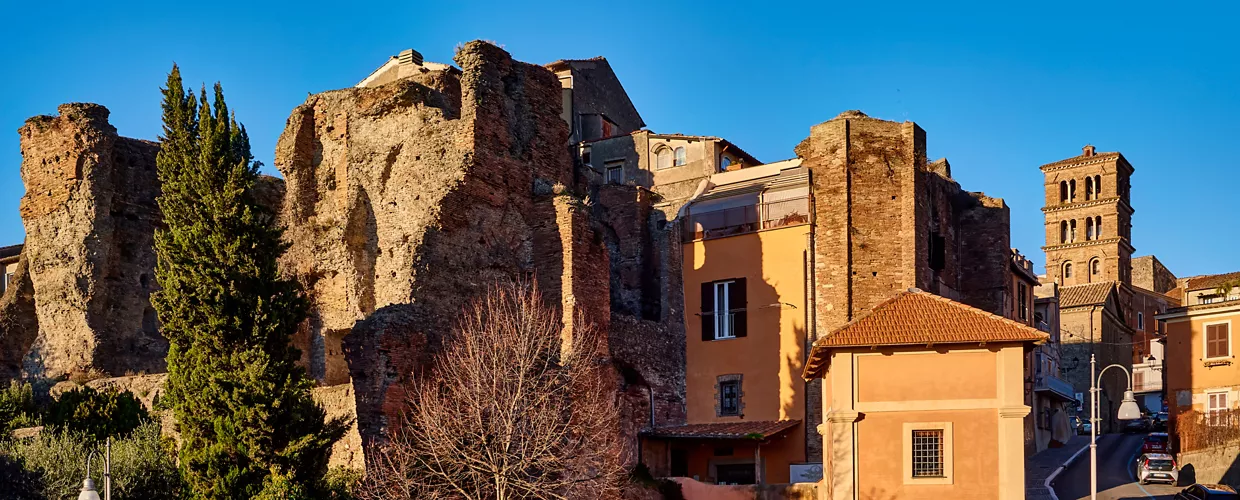This content was automatically translated. View the original text.


Overview
The town rightly identifies its name with that of Lake Albano on the south-western shore of which lies the settlement. It was here between the 2nd and 3rd century that Emperor Septimius Severus had wanted to found the "Castra Albana", i.e. the military camp of his Second Parthian Legion. Far less ancient, between the 13th and 17th centuries, the area had been a fief of the Savelli family.
Evidence of these events can be found along what are now Corso Matteotti and Borgo Garibaldi, sections of the Via Appia. The terrace of piazza Mazzini opens up to a view of the Roman countryside and the park of Villa Doria Pamphili. The Cathedral preserves a crypt behind its 18th-century façade with the columns and capitals of the original early Christian basilica still standing. The church of S. Pietro reveals that it used a hall from the much earlier Baths of Caracalla. Among the ruins of the Baths, the museum dedicated to the Legion of Septimius Severus, exhibits Roman artefacts and reproductions of legionary equipment. At the beginning of Via Saffi, the remains of the Porta Pretoria which was the main entrance to the "Castra Albana", was uncovered by bombing in 1944. Not far away, the church of S. Maria della Rotonda owes its circular plan to the Nymphaeum of Domitian on which it was erected in the 9th century. On the opposite side of Via Saffi, the Cisternoni are a grandiose underground storage area dug into the rock to supply water to the Roman castrum.
Behind the church of San Paolo the grandiose ruins of the Roman Amphitheatre which was capable of holding fifteen thousand spectators. In the neoclassical Villa Ferrajoli among its centuries-old pine trees, the Municipal Archaeological Museumexhibits artefacts from the Palaeolithic to the Middle Ages. At the southern edge of the settlement, there is a mausoleum from the 1st century BC, the so-called Tomb of Horatii and Curiatii. Nearby, below the church and convent of S. Maria della Stella, are the Catacombs of S. Senatore, a cemetery complex from the very first centuries of the Christian era, with the central crypt frescoed in later centuries.
00041 Albano Laziale RM, Italia